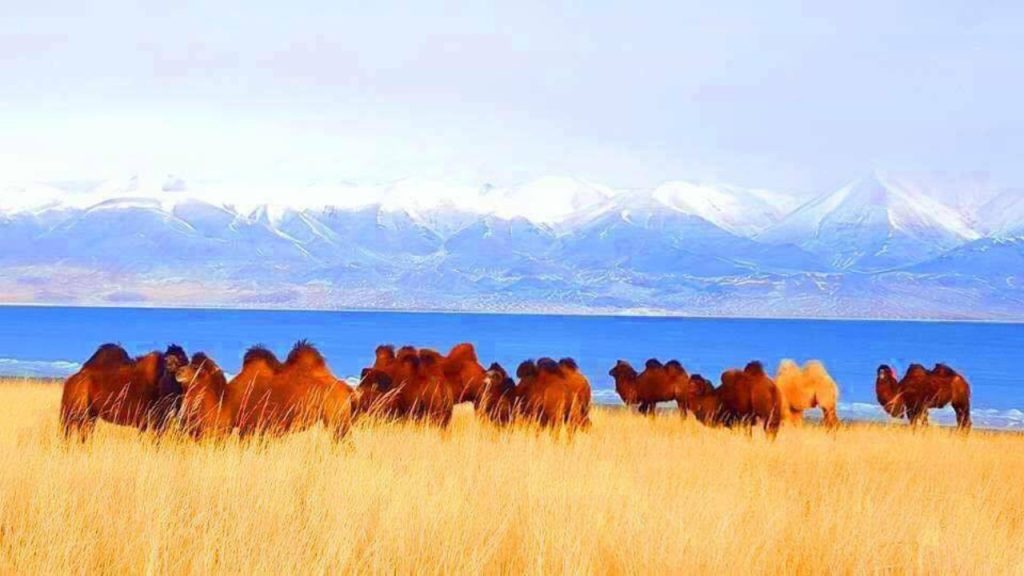The 10 most beautiful spots in Mongolia
Mongolia may not be on the top of everyone’s list of must-visit places, but it really should be. The Asian country is a unique, diverse land with many beautiful places to discover and explore, from the capital Ulaanbaatar, to ethereal places of worship, to picturesque natural wonders. Whether you want to take in some culture or see what Mother Nature has to offer, you’ll find it in any one of these pretty places in Mongolia.

Ulaanbaatar
Ulaanbaatar is the capital of Mongolia with about 1.3 million residents. It’s a fascinating city that beautifully combines old and new. Visitors will find a vibrant city brimming with modern buildings, shopping, art, a thriving nightlife scene, restaurants and much more; however, they will also be able to explore incredible historic sites and witness the traditional way of life, including horseman and cattle. A couple must-see spots that are sure to take your breath away are Zaisan Hill – a hill that features a memorial built by the Russians – which affords some amazing views of the city and surrounding land, and Sukhbaatar Square – the bustling main square of the city.
Altai Tavan Bogd National Park
Situated on the borders of both Russia and China in western Mongolia, Altai Tavn Bogd National Park is a stunning natural beauty made up of 630,000 hectares and features five of the tallest mountain peaks in the country, with the highest being 14,201 feet. Known as Khuiten Uul, this peak along with the four others make up the Tavan Bogd, or ‘Five Sacred’ in English. From glaciers to lakes to a ten-meter waterfall and archaeological sites including the UNESCO World Heritage Site Petroglyph Complexes of the Mongolian Altai, the area is rich in natural wonders; and that’s not to mention the wildlife that call the area home, such as corsac foxes, argali sheep, grey wolves, snow leopards and ibex, to name but a few. This park is a true nature-lover’s paradise, with plenty of adventures to indulge in such as hiking, water rafting, and camel riding.
Amarbayasgalant Monastery
Not yet a UNESCO World Heritage Site, the Amarbayasgalant Monastery, with its 28 temples and incredible landscape, is on the tentative list, meaning that it could very well be on its way to being nominated. One of the most important Buddhist sites in Mongolia – some say in the top three – this impressive monastery was built from 1727 to 1736 and was dedicated to Zanabazar, a beloved Mongolian Buddhist and sculptor. Nestled in the Ivon Gol River Valley, a verdant, hilly landscape, the surroundings are nothing short of amazing. In addition to the compound, there are also some sculptures, one of which is located on the hill, providing picturesque views.
Erdene Zuu Monastery
Located a little over a mile away from Kharkhorin, the Erdene Zuu Monastery, at its peak, once had somewhere between 60 to 100 temples. Established by Altai Khaan in 1586, the monastery went through a period of decline until it was closed in 1937 by the Stalinist regime. However, in 1990, after the end of communism, it was allowed to thrive once again as an important religious center and is seen by many to be the most significant monastery in Mongolia. Visitors can roam the grounds and take in the scenic beauty of the 16th-century temples or, for a small fee, they can take a guided tour of the interiors where they can view paintings, thangkas (religious paintings usually on cotton or silk), and masks, most of which are from the 18th century.
Gorkhi-Terelj National Park
Located northeast of Ulaanbaatar, Gorkhi-Terelj National Park is a natural treasure and outdoor-adventurer’s paradise. Its picturesque landscape and numerous natural attractions attract tourists from all over the world who want to explore the unspoiled land, often on horseback or camels. Visitors will discover rock formations (such as Turtle Rock and the Old Man Reading a Book), mountains blanketed with pine trees, meadows bursting with colors from wild flowers, babbling streams, and, of course, wildlife. Adrenaline junkies can go rafting, skiing, and mountain biking , whilst those looking for something a bit more relaxing can opt for more laid-back options such as hiking and camping.
Dornod Mongolia Steppe
Located in eastern Mongolia, the Dornod Mongolia Steppe is a large, protected grassland ecosystem (one of the largest on earth) that comprises 5,700 square kilometers. The stunning vast landscape also sees about 40,000 Mongolian white-tailed gazelles migrate through the area – it is a true photographer’s haven. Surrounded by majestic mountains, the steppe is also situated on the borders of Russia and China and features hundreds of lakes (small and large), springs, rolling hills and even sand dunes. In addition to gazelles, moose, otters and bears, to name a few, also roam free.
Gobi Desert
The fifth largest desert in the world, the Gobi Desert is sprawled across both China and Mongolia, specifically the southern portion of the country. It is a land of extremes, with temperatures falling as low as minus 40 degrees Fahrenheit in the winter and soaring to 122 degrees Fahrenheit in the summer; however, it is a stunning site to see and, of course, much different than other parts of Mongolia – be sure to visit the Khongor Sand Dunes. For those people who prefer to be at one with nature, with a sense of isolation, then the Gobi Desert is the place to visit with its peaceful atmosphere. You might even see a black-tailed gazelle, bactrian camels or even a bear.
lia
Lake Khovsgol
‘The Dark Blue Pearl’ – this is how Lake Khövsgöl is often described. A gorgeous fresh water lake that is frozen for almost half of the year (January to April or sometimes May), this gem is surrounded by forests of pine trees, verdant meadows, and, of course, an abundance of wildlife like reindeer, moose, ibex and yaks, to name but a few. The lake itself is 84 miles long by 22 miles wide and 860 miles of pure fresh water. Visit the scenic area in the summer when the lake has thawed; it’s best explored by canoe or kayak or simply by a relaxing swim.
Orkhon Valley
A UNESCO World Heritage Site, the Orkhon Valley Cultural Landscape should definitely be on your list of beautiful places to explore when visiting Mongolia. Situated in central Mongolia about 224 miles southeast of Ulaanbaatar, the area is steeped in history, making it a history buff’s dream. The landscape is home to architectural ruins that date all the way back to the 6th century, Kharkhorin – Genghis Khan’s capital from the 13th- and 14th-century – plus a large area of pastureland along the Orkhon River that is still used today. It is also in the Orkhon Valley where you’ll find the aforementioned Eredene Zuu Monastery.
Gun-Galuut Nature Reserve
The Gun-Galuut Nature Reserve is a smaller area of 200 square meters located approximately 80 miles southeast of the capital. Situated in the Tuv province, this landscape is a gem, with varying scenery such as water sources (rivers and lake), mountains and wetlands. Because the area is brimming with diverse landscapes, it is also home to some incredible wildlife, much of which is endangered; therefore, the reserve is a protected site, offering a safe place for species like wild mountain sheep, the Siberian white crane, the great white egret and the bearded vulture. Gun-Galuut also offers many fun adventures for the outdoor enthusiast, from camel riding to kayaking to archery.




